Global LATAM Oilfield Chemicals Market Report
The Latin America (LATAM) oilfield chemicals market is a rapidly growing market that is driven by the increasing demand for oil and gas in the region. The LATAM oilfield chemicals market includes a range of chemicals that are used in various oil and gas production processes, including drilling, completion, production, and maintenance. These chemicals help to enhance the performance of oil and gas wells, improve the recovery of hydrocarbons, and reduce the environmental impact of oil and gas production.
The key drivers of the LATAM oilfield chemicals market include the increasing demand for oil and gas in the region, the development of unconventional oil and gas resources, and the need for enhanced oil recovery (EOR) techniques to improve the productivity of mature oilfields. The development of new oil and gas reserves in the region has also led to increased demand for drilling fluids, cementing chemicals, and completion fluids, which are used to improve wellbore stability and prevent damage to reservoirs during drilling and completion.
The LATAM oilfield chemicals market is segmented based on product type, application, and geography. The product types include drilling fluids, cementing chemicals, stimulation chemicals, production chemicals, EOR chemicals, and others. The application areas of oilfield chemicals in the LATAM region include onshore and offshore drilling, completion and workover, production, and EOR.
The key players in the LATAM oilfield chemicals market are BASF SE, Schlumberger Limited, Halliburton Company, Dow Chemical Company, Baker Hughes, a GE Company, and others. These companies are focused on developing new and innovative oilfield chemicals that can improve the efficiency of oil and gas production processes and reduce the environmental impact of oil and gas operations.
The challenges faced by the LATAM oilfield chemicals market include the volatile nature of the oil and gas industry, the fluctuations in oil and gas prices, and the environmental concerns associated with oil and gas production. However, the increasing demand for oil and gas in the region, the development of new oil and gas reserves, and the need for advanced EOR techniques are expected to drive the growth of the LATAM oilfield chemicals market in the coming years.
The LATAM oilfield chemicals market is segmented based on geography into various regions, including Brazil, Mexico, Venezuela, Colombia, Argentina, and others.
Brazil is the largest market for oilfield chemicals in the LATAM region, driven by the country’s vast oil and gas reserves, which require a range of chemicals to improve wellbore stability and prevent damage to reservoirs during drilling and completion. The Brazilian government has also introduced several initiatives to promote the development of the country’s oil and gas sector, which is expected to drive the demand for oilfield chemicals in the country.
Mexico is another key market for oilfield chemicals in the LATAM region, driven by the increasing demand for oil and gas in the country and the development of new oil and gas reserves. The Mexican government has also introduced several initiatives to attract foreign investment in the country’s oil and gas sector, which is expected to drive the demand for oilfield chemicals in the country.
Venezuela, despite its current economic and political challenges, remains a significant market for oilfield chemicals in the LATAM region. The country has vast oil and gas reserves, which require a range of chemicals to improve the efficiency of oil and gas production processes.
Colombia and Argentina are also emerging markets for oilfield chemicals in the LATAM region, driven by the development of new oil and gas reserves and the need for enhanced oil recovery (EOR) techniques to improve the productivity of mature oilfields.
Overall, the key regions of the LATAM oilfield chemicals market are Brazil, Mexico, Venezuela, Colombia, and Argentina. These countries are expected to drive the growth of the market in the coming years, driven by the increasing demand for oil and gas in the region and the development of new oil and gas reserves.
Table of Contents
Global LATAM Oilfield Chemicals Market Report
1 Market Introduction of LATAM Oilfield Chemicals Market Report
2 Market Segmentation of LATAM Oilfield Chemicals Market Report
2.1 LATAM Oilfield Chemicals Market Segmentation By Region
2.2 LATAM Oilfield Chemicals Market Segmentation By Type
2.3 LATAM Oilfield Chemicals Market Segmentation By Crop Type
3 Cost Structure of LATAM Oilfield Chemicals Market Report
4 Country Analysis of Global LATAM Oilfield Chemicals Market Report
4.1 China
4.1.1 LATAM Oilfield Chemicals Market Forecast & Size in China
4.1.2 LATAM Oilfield Chemicals Market Trends & Analysis in China
4.1.3 Key LATAM Oilfield Chemicals companies in China
4.1.4 Regulatory Framework of LATAM Oilfield Chemicals Market in China
4.2 Germany
4.2.1 LATAM Oilfield Chemicals Market Size in Germany
4.2.2 LATAM Oilfield Chemicals Market Trends & Analysis in Germany
4.2.3 Key LATAM Oilfield Chemicals companies in Germany
4.2.4 Regulatory Framework of LATAM Oilfield Chemicals Market in Germany
4.3 France
4.3.1 LATAM Oilfield Chemicals Market Size in France
4.3.2 LATAM Oilfield Chemicals Market Trends & Analysis in France
4.3.3 Key LATAM Oilfield Chemicals companies in France
4.3.4 Regulatory Framework of LATAM Oilfield Chemicals Market in France
4.4 Italy
4.4.1 LATAM Oilfield Chemicals Market Size in Italy
4.4.2 LATAM Oilfield Chemicals Market Trends & Analysis in Italy
4.4.3 Key LATAM Oilfield Chemicals companies in Italy
4.4.4 Regulatory Framework of LATAM Oilfield Chemicals Market in Italy
4.5 Netherland
4.5.1 LATAM Oilfield Chemicals Market Size in Netherland
4.5.2 LATAM Oilfield Chemicals Market Trends & Analysis in Netherland
4.5.3 Key LATAM Oilfield Chemicals companies in Netherland
4.5.4 Regulatory Framework of LATAM Oilfield Chemicals Market in Netherland
4.6 Russia
4.6.1 LATAM Oilfield Chemicals Market Size in Russia
4.6.2 LATAM Oilfield Chemicals Market Trends & Analysis in Russia
4.6.3 Key LATAM Oilfield Chemicals companies in Russia
4.6.4 Regulatory Framework of LATAM Oilfield Chemicals Market in Russia
4.7 Canada
4.7.1 LATAM Oilfield Chemicals Market Size in Canada
4.7.2 LATAM Oilfield Chemicals Market Trends & Analysis in Canada
4.7.3 Key LATAM Oilfield Chemicals companies in Canada
4.7.4 Regulatory Framework of LATAM Oilfield Chemicals Market in Canada
4.8 Mexico
4.8.1 LATAM Oilfield Chemicals Market Size in Mexico
4.8.2 LATAM Oilfield Chemicals Market Trends & Analysis in Mexico
4.8.3 Key LATAM Oilfield Chemicals companies in Mexico
4.8.4 Regulatory Framework of LATAM Oilfield Chemicals Market in Mexico
4.9 Singapore
4.9.1 LATAM Oilfield Chemicals Market Size in Singapore
4.9.2 LATAM Oilfield Chemicals Market Trends & Analysis in Singapore
4.9.3 Key LATAM Oilfield Chemicals companies in Singapore
4.9.4 Regulatory Framework of LATAM Oilfield Chemicals Market in Singapore
4.10 United Kingdom
4.10.1 LATAM Oilfield Chemicals Market Size in United Kingdom
4.10.2 LATAM Oilfield Chemicals Market Trends & Analysis in United Kingdom
4.10.3 Key LATAM Oilfield Chemicals companies in United Kingdom
4.10.4 Regulatory Framework of LATAM Oilfield Chemicals Market in United Kingdom
4.11 Switzerland
4.11.1 Market Size in Switzerland
4.11.2 Market Trends & Analysis in Switzerland
4.11.3 Key LATAM Oilfield Chemicals companies in Switzerland
4.11.4 Regulatory Framework of LATAM Oilfield Chemicals Market in Switzerland
4.12 Brazil
4.12.1 Market Size in Brazil
4.12.2 Market Trends & Analysis in Brazil
4.12.3 Key LATAM Oilfield Chemicals companies in Brazil
4.12.4 Regulatory Framework of LATAM Oilfield Chemicals Market in Brazil
4.13 USA
4.13.1 Market Size in US
4.13.2 Market Trends & Analysis in US
4.13.3 Key LATAM Oilfield Chemicals companies in US
4.13.4 Regulatory Framework of LATAM Oilfield Chemicals Market in US
4.14 Japan
4.14.1 Market Size in Japan
4.14.2 Market Trends & Analysis in Japan
4.14.3 Key LATAM Oilfield Chemicals companies in Japan
4.14.4 Regulatory Framework of LATAM Oilfield Chemicals Market in Japan
4.15 South Korea
4.15.1 Market Size in South Korea
4.15.2 Market Trends & Analysis in South Korea
4.15.3 Key LATAM Oilfield Chemicals companies in South Korea
4.15.4 Regulatory Framework of LATAM Oilfield Chemicals Market in South Korea
4.16 India
4.16.1 Market Size in India
4.16.2 Market Trends & Analysis in India
4.16.3 Key LATAM Oilfield Chemicals companies in India
4.16.4 Regulatory Framework of LATAM Oilfield Chemicals Market in India
4.17 Thailand
4.17.1 Market Size in Thailand
4.17.2 Market Trends & Analysis in Thailand
4.17.3 Key LATAM Oilfield Chemicals companies in Thailand
4.17.4 Regulatory Framework of LATAM Oilfield Chemicals Market in Thailand
4.18 Russia
4.18.1 Market Size in Russia
4.18.2 Market Trends & Analysis in Russia
4.18.3 Key LATAM Oilfield Chemicals companies in Russia
4.18.4 Regulatory Framework of LATAM Oilfield Chemicals Market in Russia
4.19 Malaysia
4.19.1 Market Size in Malaysia
4.19.2 Market Trends & Analysis in Malaysia
4.19.3 Key LATAM Oilfield Chemicals companies in Malaysia
4.19.4 Regulatory Framework of LATAM Oilfield Chemicals Market in Malaysia
4.20 Saudi Arabia
4.20.1 Market Size in Saudi Arabia
4.20.2 Market Trends & Analysis in Saudi Arabia
4.20.3 Key LATAM Oilfield Chemicals companies in Saudi Arabia
4.20.4 Regulatory Framework of LATAM Oilfield Chemicals Market in Saudi Arabia
5 Global LATAM Oilfield Chemicals Market Trends
5.1 LATAM Oilfield Chemicals Market Trends- Key Drivers
5.2 LATAM Oilfield Chemicals Market Trends- Key Restraints
5.3 LATAM Oilfield Chemicals Market Trends- Key Challenges
5.4 Porter’s Five Forces Analysis of LATAM Oilfield Chemicals Market
5.5 PEST Analysis- LATAM Oilfield Chemicals Market
6 Global LATAM Oilfield Chemicals Market Forecast
6.1 LATAM Oilfield Chemicals Market Forecast By Region
6.1.1 North America
6.1.2 Europe
6.1.3 APAC
6.1.4 Middle East
6.1.5 ROW
6.2 LATAM Oilfield Chemicals Market Forecast By Type
6.2.1 Fertilizer
6.2.2 Pesticide
6.3 LATAM Oilfield Chemicals Market Forecast By Crop Type
6.3.1 Fruits & Vegetables
6.3.2 Oilseed and Pulses
6.3.3 Cereals & Grains
6.3.4 Other
7 Supply Chain of the LATAM Oilfield Chemicals Market Analysis
8 Opportunity Analysis
9 Scenario Analysis
10 Key Company Profiles
11 Strategic Conclusions – LATAM Oilfield Chemicals Market Report
12 Abbreviations used in LATAM Oilfield Chemicals Market Report
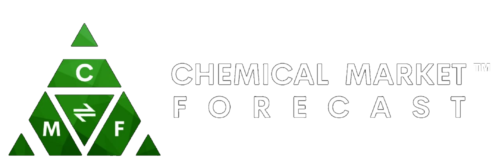

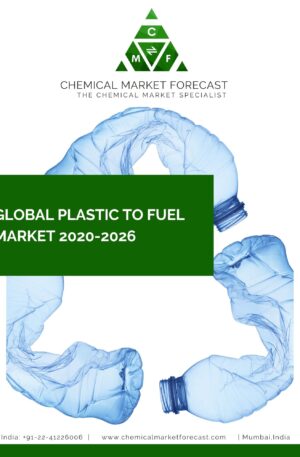
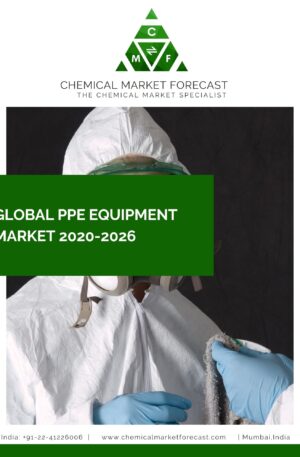
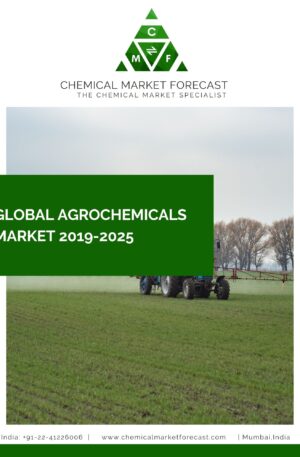
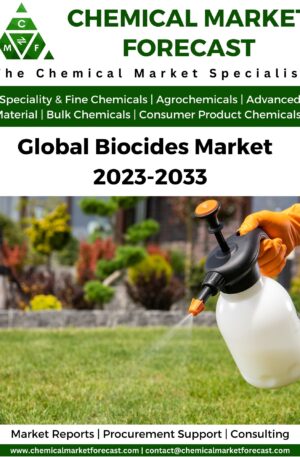
Reviews
There are no reviews yet.